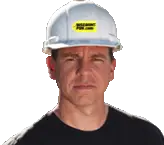| 1. |
Rumble strips can be placed in several locations on the roadway including across the travel lane of the roadway, along the centerline and within the shoulder. When placed in the traveled way of a roadway, rumble strips warn drivers of an upcoming condition such as an intersection, a horizontal curve, narrow bridge approaches, toll plaza, outside shoulders of lane drops, work zones, gore areas of freeway off-ramps, or paved highway medians. Rumble strips placed in the centerline of a roadway are intended to prevent crossovers resulting in head-on crashes. |
|
|
True |
|
|
False |
| 2. |
There are four primary types of rumble strips: milled, rolled, formed or corrugated, and raised. These types of rumble strips differ in their installation methods, size, shape, spacing, and noise and vibration produced. |
|
|
True |
|
|
False |
| 3. |
_________________ shows the design features for each type of rumble strip. |
|
|
Table 1 |
|
|
Table 2 |
| 4. |
_____________________ are currently the most commonly used type of rumble strip among various highway agencies. The strip is made by cutting or grinding the pavement surface using carbide teeth affixed to a rotating drum. Milled rumble strips are typically 180 millimeters wide in the direction of travel and 400 mm long perpendicular to the direction of travel. |
|
|
Milled rumble strips |
|
|
Rolled rumble strips |
| 5. |
Rolled rumble strips have been shown to be 12.6 times rougher and 3.4 times louder than that of milled rumble strips. |
|
|
True |
|
|
False |
| 6. |
Formed, or corrugated rumble strips can be installed in Portland Cement Concrete (PCC) shoulders. This type of rumble strip is not used as often due to the more commonly used asphalt shoulders in this region. |
|
|
True |
|
|
False |
| 7. |
Raised rumble strips use different materials such as raised pavement markers or asphalt bars, which adhere to existing or new shoulder surfaces. The use of raised rumble strips is limited to warmer climates due to maintenance difficulties resulting from snow removal in cold climates. These strips can be placed continuously or can be spaced along the shoulder length intermittently. |
|
|
True |
|
|
False |
| 8. |
Shoulder rumble strips not only differ in their design, but they also differ in the noise and vibration levels they provide. The noise and vibration produced by a rumble strip should be loud and strong enough to be heard inside the vehicle and felt by the driver. |
|
|
True |
|
|
False |
| 9. |
__________________ represents the Cycle Length for Intermittent Shoulder Rumble Strips. |
|
|
Table 3 |
|
|
Table 4 |
| 10. |
Roadway volume and the proportion of heavy vehicles in the traffic are also considered as factors to justify the placement of shoulder rumble strips on roadways used by bicycles. |
|
|
True |
|
|
False |
| 11. |
Weather and roadway surface condition is a contributing factor in many of the run-off-road accidents. There is a higher proportion of run-off-road crashes during rain and snow conditions than all motor vehicle crashes during these weather conditions. |
|
|
True |
|
|
False |
| 12. |
The width of the shoulder should be considered in determining whether a shoulder rumble strip should be included on a roadway. The suggested minimum shoulder width before installation should range from 610 mm (2 ft) to 2438 mm (8 ft). |
|
|
True |
|
|
False |
| 13. |
Shoulder rumble strips are intended for installation at longer roadway segments with infrequent interruption. The State of Oklahoma has as one of its criteria for the placement of shoulder rumble strips that the minimum length of uninterrupted roadway needed is determined as follows: L=(1/30)VD where L – uninterrupted roadway length (miles) and VD -design speed (mph). |
|
|
True |
|
|
False |
| 14. |
Rolled rumble strips are recommended on fully controlled roadways or roads where bicycles are prohibited. |
|
|
True |
|
|
False |
| 15. |
______________ represents the Views on Shoulder Rumble Strip Placement. |
|
|
Table 5 |
|
|
Table 6 |
|


